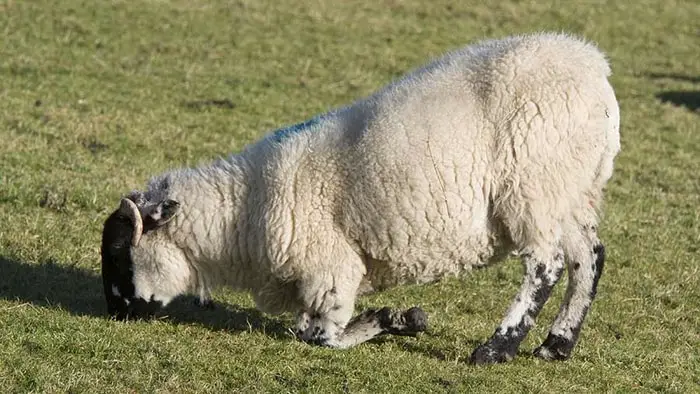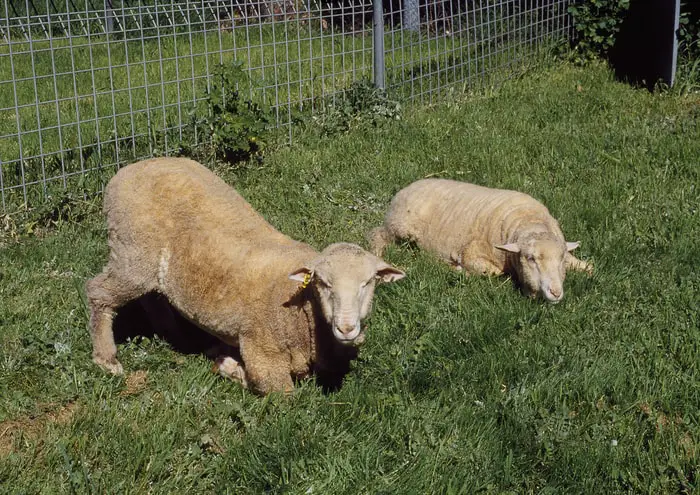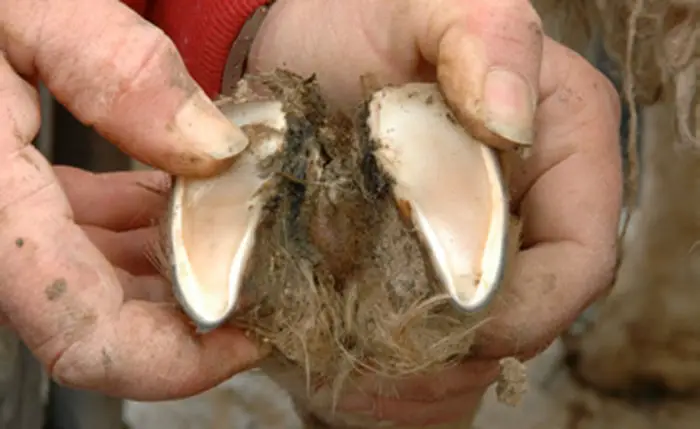Foot-rot in sheep is a contagious bacterial disease of sheep and goats. The organism Dichelobacter nodosus cause the condition in association with a member of other bacterias. The disease was first identified in 1869. It is an infectious disease that causes economic loss from decreased flock production and lameness. Lameness is usually the most critical sign of an infected animal. Foot-rot is a severe disease, and affected animals can lose weight rapidly.
Importance of Foot-rot in Sheep
Sheep are vital to farm animals that provide meat, wool, and hides for humankind. Sheep are more disease resistant than other farm animals. Foot-rot is a common problem in a hot and humid environment. Faulty management and poor hygiene is the leading risk factor of the disease. In my article, I shall discuss the most critical points for your easy understanding.

Causes of Foot-rot in Sheep
Ovine foot-rot is caused by an infection of two anaerobic, gram-negative bacteria, Bacteroides nodosus ( formerly Fusiformis nodosus ) and Fusobacterium necrophorum (formerly Sphaerophorus necrophorus). F necrophorum is a typical inhabitant of the ruminant digestive tract. In wet weather, it may interact with other bacteria, Corynebacterium pyogenes, to produce foot scald, an infection of the skin between the toes. This infection sets up the foot for invasion by B. nodosus, which working in conjunction with the Fusobacterium produces the condition referred to as foot rot.

Economic Effects of the Disease
The significant economic effects of foot-rot in sheep farms are as follows:
- Reduced wool growth and quality.
- Losses from blowfly strike.
- Low ewe fertility reduced the value of the sale of sheep.
- Poor growth rate.
Transmission Methods of Foot-rot Organisms
The bacteria that cause foot-rot, Bacteroides nodosus are spread from infected sheep to the ground, manure, bedding, etc. Non-infected sheep then pick it up. Foot-rot is introduced by the purchase of an infected animal or by merely using facilities or trucks that have been contaminated by infected sheep. Transmission occurs best when the temperature is from 40 to 70 degrees F, and the environment is wet. The organism does not survive long in the background (<2 weeks). The organism carries in the flock will continue to reinfect the herd unless the animal should be culled or the organism is eliminated by proper treatment.

What are the Symptoms of Foot-rot in Sheep?
The most common symptoms of foot-rot are as follows:
- Lameness is usually the significant sign of an infected animal, although sheep with early infection may not exhibit lameness. The area between the toes first becomes moist and reddened.
- Then the infection invades the sole of the hoof, undermining and causing separation of the horney tissues.
- The infection causes a characteristic foul order and may infect one or more feet at the same time.

How Do You Treat Foot-rot in Sheep?
The best results are obtained when several of the following methods are combined.
- Foot trimming should be done at least one to two times per year as a part of regular management practices, and more often in conjunction with footbaths in the control of foot-rot.
- The practice reduces the number of cracks and crevices where bacteria can hide, remains infected hoof, and expose the organism to air and various medications.
- You must trim or remove all affected tissues.
- It is necessary if the medication and oxygen are to reach the bacteria and kill them.
- When trimming feet, it is essential to disinfect the trimming instrument (foot shear, hoof parer, or knife) between animals to prevent the infection from spreading.
- The foot baths or foot soaks a very effective treatment for foot-rot in sheep.
- There are two different types of solutions commonly used in foot baths: Zinc sulfate and Copper sulfate.
- For treatment, they should be used 1 to 2 times per week for several weeks.
- Penicillin and streptomycin combinations used either as a one-short treatment or every day up to 10 days have been proven effective in treating foot-rot.
- Single-injection of long-acting tetracycline has also been successful in some cases.
- You can use different medications to the hoof immediately after paring to control foot-rot—zinc sulfate 10% 0.25 lb in one-quarter water and copper sulfate 10% vinegar.

Prevention, Control, and Eradication Program
Five management principles will help keep foot-rot from being introduced into the clean flock. These are-
- Trim and treat all new arrivals’ feet, then re-examine them periodically during the 30-day isolation period.
- Never buy sheep with foot-rot or form a flock infected with foot-rot, even if the animals appear unaffected.
- Never transport sheep in an unclean vehicle.
- Avoid using facilities ( trails. Corrals, dipping areas ) where infected sheep may have been in the last two weeks.
- Avoid buying sheep at sale yards, or livestock markets were clean and infected sheep may have been commingled or run through the same area.
Vaccination of Foot-rot in Sheep
Vaccines for Bacteroides nodosus will give you 60 to 80% success after application. A regimen of two vaccinations subcutaneously on the neck just behind the ear 4 to 6 weeks apart is used. Before starting the wet season, Vaccination is recommended, followed by a booster each year before the wet season.
Final Advice on Foot-rot in Sheep
Foot-rot is not a deadly disease in sheep, but it will hamper your farm’s performance a lot. You can prevent the disease by merely improving the management of your farm. You must go for regular hoof trimming, clean the house, use disinfectants, and Vaccination against the organism. I think this article will help both veterinarians and farm owners to take necessary steps against the disease. If the item is beneficial, please share it with your friends.